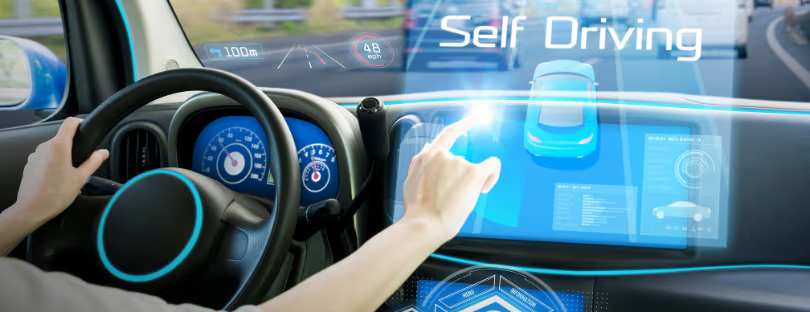
How Reliable Are Personal Air Quality Monitors for Urban Travel?
Urban environments, bustling with traffic, industry, and human activity, have increasingly become zones of concern when it comes to air quality. As travelers, we find ourselves moving through these environments, often unaware of the pollutants lingering in the air. This growing awareness has led many urban explorers to rely on personal air quality monitors to stay informed about their surroundings.
But just how reliable are these devices for providing accurate readings, and should they be trusted when navigating urban spaces?
Understanding the Need for Personal Air Quality Monitors
The primary appeal of personal air quality monitors lies in their promise to deliver real-time information on the quality of the air around us. As pollution becomes a more prevalent issue globally, the need to understand air quality is no longer limited to scientists or city planners. Urban travelers have become increasingly health-conscious, and the ability to monitor pollutants such as PM2.5 (particulate matter), carbon dioxide (CO2), volatile organic compounds (VOCs), and other harmful substances is a key selling point for these portable devices.
Urban areas are notorious for fluctuating air quality, and travelers may encounter wide variations in pollutant levels from one street to the next. This variability has sparked a demand for more personalized air quality data, but questions persist about the accuracy and reliability of the data provided by personal monitors.
Factors Influencing Air Quality Monitor Accuracy
When evaluating the reliability of personal air quality monitors, several factors come into play, which can drastically affect their readings. Here are the most significant considerations:
1. Sensor Quality and Calibration
The performance of any air quality monitor is heavily dependent on the quality of its sensors. Many personal air quality monitors use sensors that are smaller and less sensitive than those found in professional-grade equipment. As a result, they may not detect lower concentrations of certain pollutants or may struggle with accuracy when exposed to rapid changes in the environment.
Furthermore, sensor calibration is crucial. Manufacturers of high-quality personal monitors typically pre-calibrate their devices, but some cheaper models may suffer from inaccurate readings if not properly calibrated. Over time, sensors can drift, leading to less reliable data, which makes regular recalibration essential.
2. Device Placement and Environmental Factors
Another key factor affecting accuracy is where and how the device is used. Urban environments can be challenging due to various elements that interfere with accurate readings, such as temperature fluctuations, humidity levels, and wind patterns. Personal air quality monitors are sensitive to such conditions, and incorrect placement—such as holding the device too close to your body or in a bag—can skew results.
For instance, particulate matter (PM) levels can vary widely depending on your proximity to the pollution source, and small shifts in your position can make a significant difference in the readings. Holding a monitor near a car exhaust pipe will produce vastly different results than using it in a more open space.
3. Limited Pollutant Detection
Many personal air quality monitors are designed to measure only a handful of common pollutants like PM2.5, CO2, and VOCs. However, urban air is often a complex mixture of many different contaminants, including nitrogen dioxide (NO2), sulfur dioxide (SO2), ozone (O3), and carbon monoxide (CO). The absence of detection capabilities for these other harmful gases can provide an incomplete picture of the actual air quality in a given location.
Travelers relying on these devices may be lulled into a false sense of security if the monitor doesn’t measure the pollutants most prevalent in a particular area.
4. Data Interpretation and App Integration
One of the significant benefits of personal air quality monitors is their integration with smartphone apps. These apps can aggregate data and present it in an easily digestible form. However, the reliability of these apps is only as good as the algorithmic models they employ. Some apps rely on external sources, combining the data from personal monitors with publicly available information from local air quality stations. This merging of data can both improve the overall picture and create potential conflicts when personal readings differ sharply from regional averages.
Moreover, how well the app interprets real-time fluctuations in data is critical. A sudden spike in VOCs might indicate an immediate health concern, but without proper interpretation, users might overlook or misinterpret these spikes as insignificant, particularly if the app fails to alert them effectively.
The Importance of Cross-Referencing Data
Given the limitations of personal air quality monitors, we believe that cross-referencing data is a vital step in ensuring reliability. Travelers should consider supplementing personal device readings with public air quality reports provided by local authorities or trusted global services, such as those from AirVisual or BreezoMeter. These platforms aggregate data from multiple sources, including government-run stations, satellite imagery, and public sensors, to offer a more comprehensive view of air quality conditions.
By comparing personal readings against regional data, travelers can better gauge the accuracy of their device. If the two sets of data align closely, the user can trust that the personal monitor is functioning well. However, significant discrepancies should raise questions about the reliability of the personal monitor in that specific environment.
Practicality vs. Professional-Grade Accuracy
While personal air quality monitors are unlikely to match the precision of professional-grade equipment, they are invaluable for urban travelers seeking a convenient and portable solution. For those with respiratory issues, such as asthma or COPD, or for anyone particularly concerned about environmental factors during their travels, personal monitors can be a useful tool for avoiding highly polluted areas.
Yet, it is crucial to acknowledge their limitations. These devices should not be relied upon as the sole source of information on air quality. Their data, while helpful, is best viewed as a general indicator rather than an exact measurement. For instance, knowing that air pollution levels are elevated may prompt users to avoid certain routes or areas, but the specific readings should be treated cautiously.
Are Personal Air Quality Monitors Worth It for Urban Travelers?
Ultimately, the question of whether personal air quality monitors are worth investing in depends on the traveler’s specific needs and expectations. If you are looking for a portable and reasonably accurate tool that provides real-time air quality information, these devices can be highly beneficial. However, for individuals requiring precise data—such as those with severe respiratory conditions or environmental researchers—personal monitors may fall short of expectations.
For the average traveler, a personal air quality monitor offers peace of mind and a rough idea of what pollutants are present, allowing them to make informed decisions on the go. When used alongside regional air quality data and smartphone apps, they offer a balanced approach to understanding urban air quality.
Conclusion: Proceed with Caution
While personal air quality monitors have come a long way in terms of portability and ease of use, their reliability varies depending on the device’s build quality, the pollutants measured, and the environmental conditions in which they are used. We recommend using them as a supplemental tool rather than a definitive source to understand air quality while traveling in urban areas. By cross-referencing with local air quality reports and considering the inherent limitations of personal devices, travelers can make more informed decisions regarding their health and safety during urban adventures.











